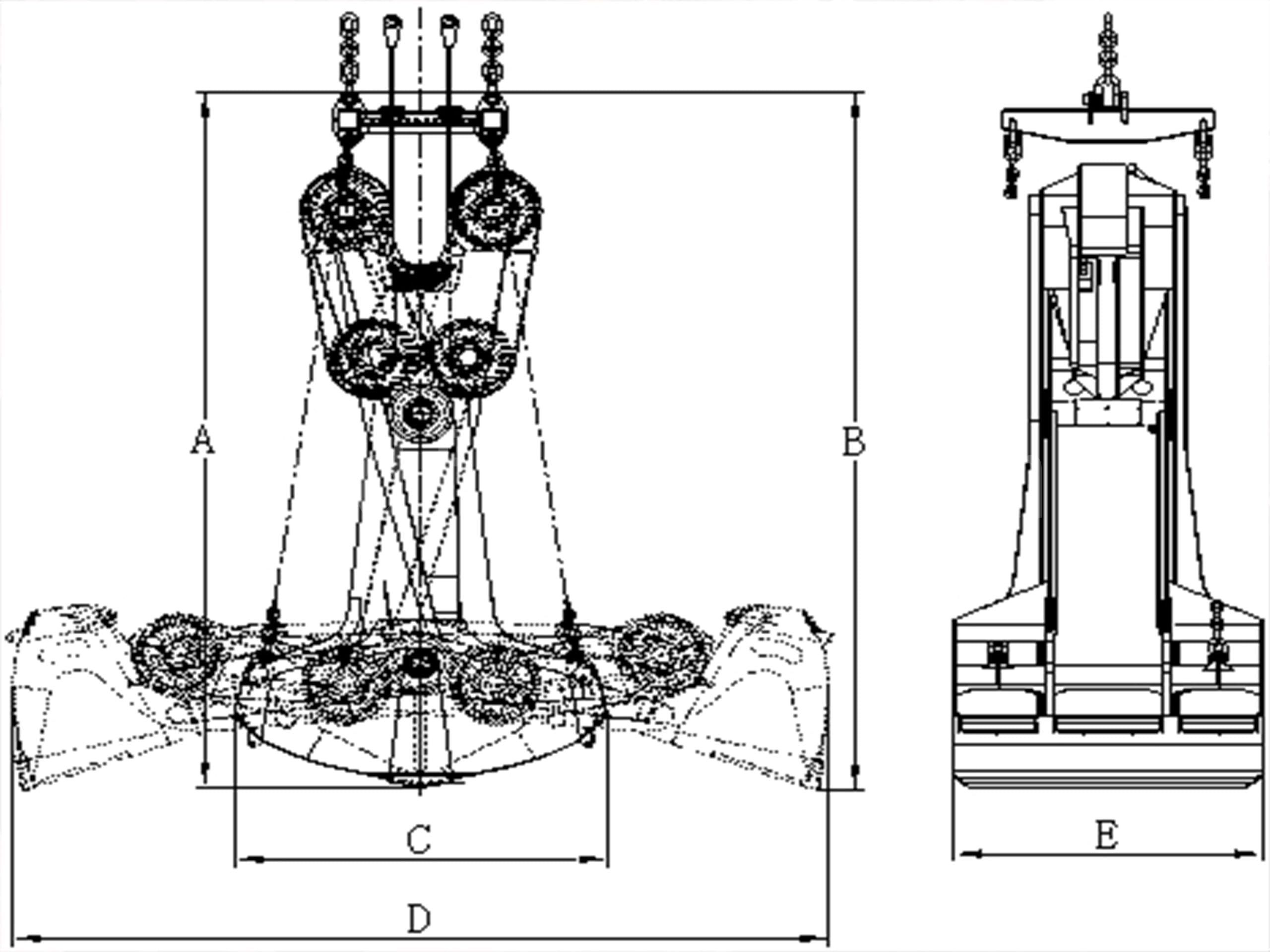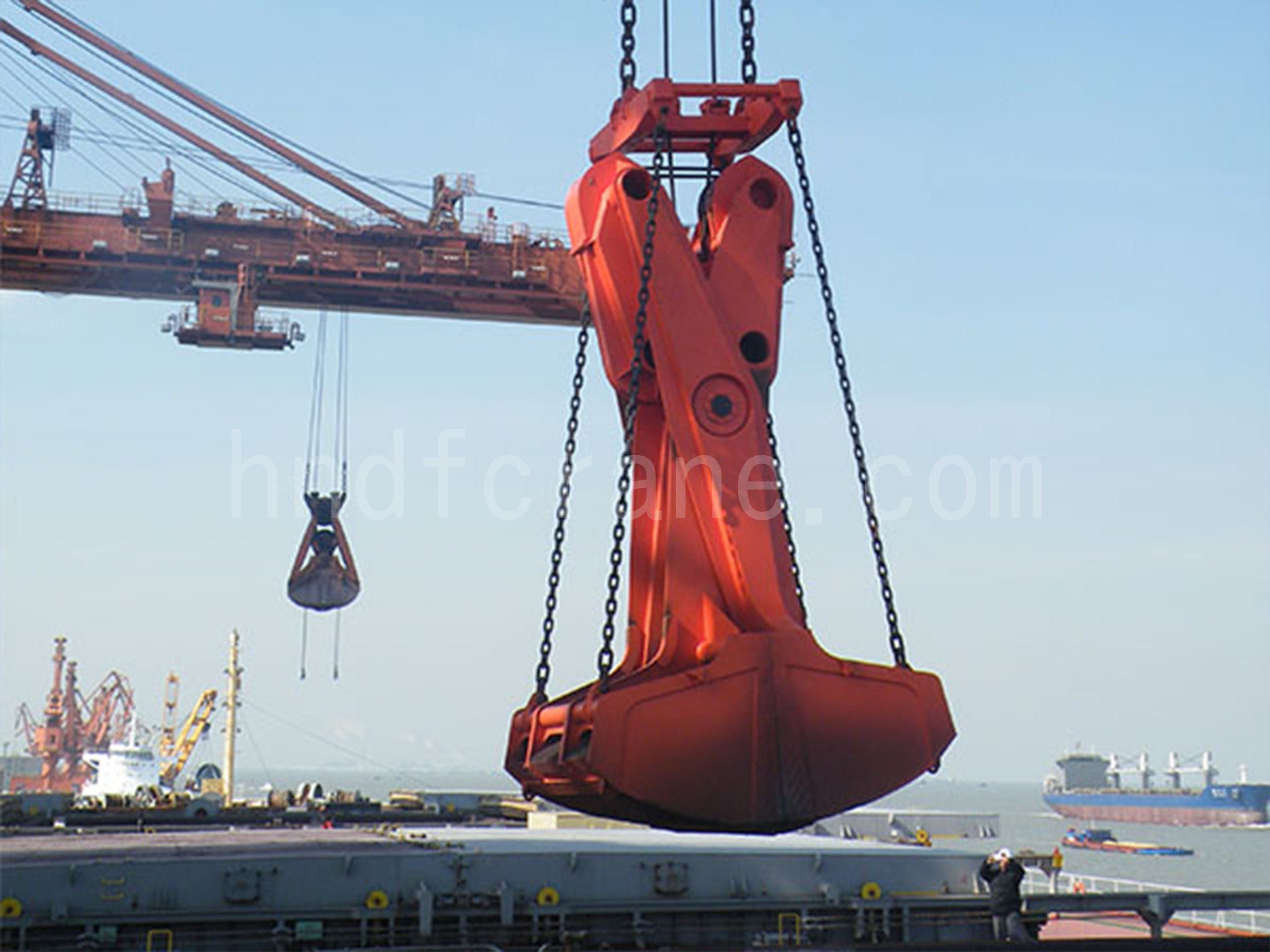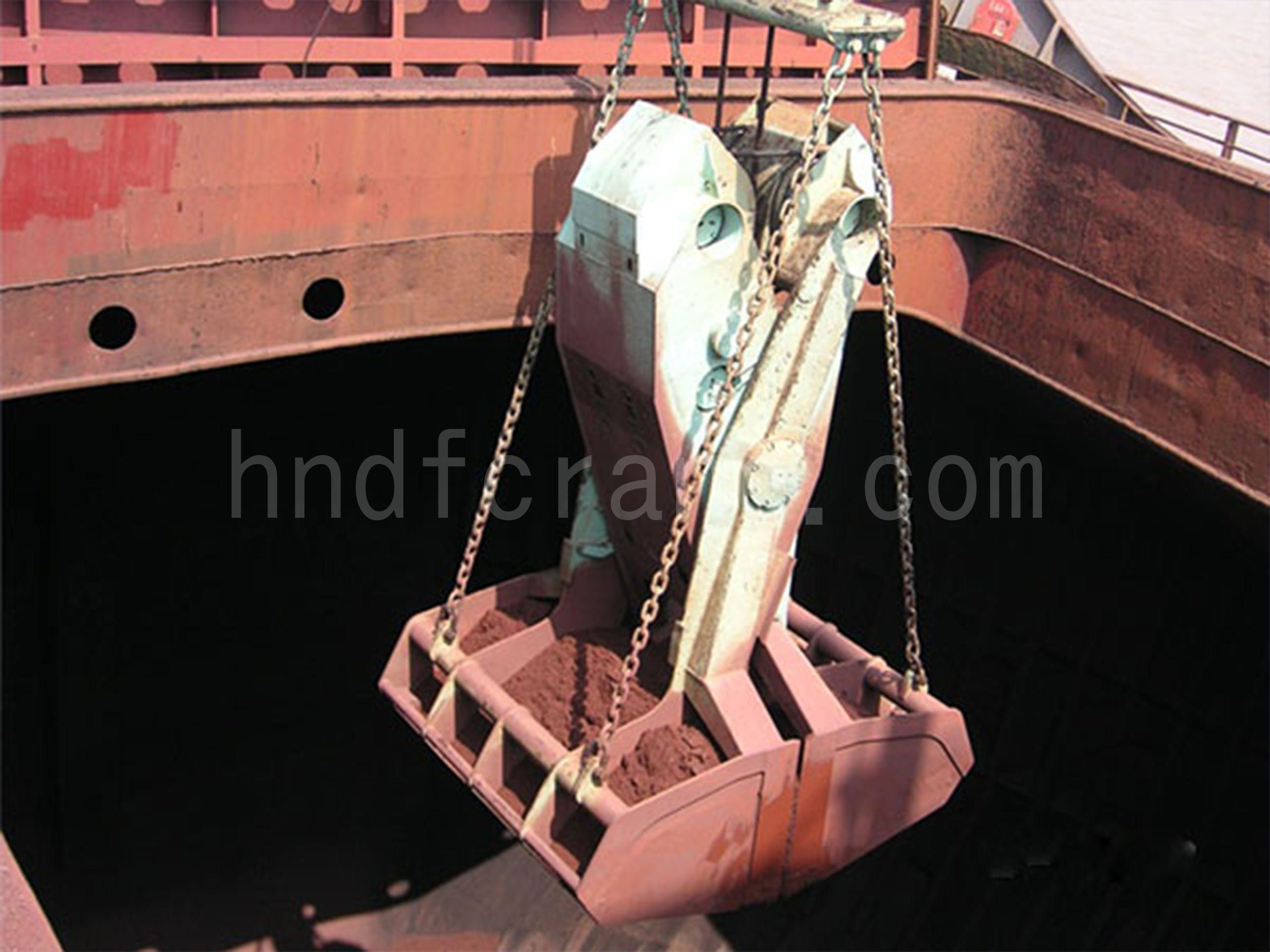Introducción del producto
Las pinzas de recorte son un nuevo tipo de pinzas para carga a granel, adecuadas para grúas de doble tambor para cargar y descargar mineral de hierro, carbón, fertilizantes a granel y otros materiales.
Las pinzas de desbaste se caracterizan por su estructura novedosa, su fácil manejo, su peso ligero y su alta relación de carga. Cuando las pinzas de desbaste se cargan con mineral de hierro, la relación puede llegar a 1:2,5.
Los recorridos de apertura y cierre de las pinzas de recorte son cortos.
Ventajas de las pinzas de corte
1.Alta relación de agarre
2. Alta eficiencia: no solo mejora en gran medida la eficiencia de producción al mejorar la relación de agarre, sino que la fuerza de agarre de la pinza de tijera es pequeña cuando está completamente abierta y comienza a agarrar la mercancía. Con el cierre de la pinza, la fuerza de excavación continúa aumentando, que es exactamente la misma que la fuerza de excavación necesaria para agarrar la mercancía, por lo que la eficiencia de agarre mejora en gran medida. Solo se requiere una carrera de apertura y cierre más pequeña para completar el cierre, lo que ahorra tiempo de cierre y apertura y mejora la eficiencia.
3. Favorece el despeje: debido a la gran apertura de la pinza de tijera, el área de agarre de cada cucharón es 60% más alta que la de la pinza de puntal largo, y no se requiere excavadora ni apilador para completar el trabajo de despeje.
4. Baja tasa de fallas: debido a la pequeña cantidad de poleas de tijera y menos pasadores, esto reduce la tasa de fallas de algunas piezas de desgaste. Debido a estas ventajas de la pinza de tijera, muchas pinzas de carga a granel grandes en puertos extranjeros han adoptado la pinza de tijera.
Parámetros técnicos

| Modelo | Capacidad(a) | Volumen (m³) | Peso del material a granelT/m3 | Autoestima(a) | Dimensiones (mm) | Diámetro de la polea(mm) | Utilice la altura(metro) | Diámetro del cable de acero(mm) | ||||
| A | B | do | D | mi | ||||||||
| CS16[4]5.5J | 16 | 4 | 2.5 | 5.5 | 4325 | 4475 | 2675 | 4590 | 2000 | ø560 | 10 | ø26 |
| CS20[5]6.6J | 20 | 5 | 2.5 | 6.6 | 4845 | 5000 | 2885 | 5110 | 2200 | ø650 | 11.5 | Ø28 |
| CS25[6.5]8.3J | 25 | 6.5 | 2.5 | 8.3 | 5450 | 5600 | 3200 | 5730 | 2350 | ø720 | 12.5 | ø32 |
| CS32[8]11J | 32 | 8 | 2.5 | 11 | 6140 | 6290 | 3400 | 6400 | 2600 | ø800 | 14.5 | ø36 |
| CS40[10.2]13.5J | 40 | 10.2 | 2.5 | 13.5 | 6920 | 7070 | 3660 | 7200 | 2750 | ø880 | 16 | ø40 |
| CS52[13]17J | 52 | 13 | 2.5 | 17 | 7785 | 7935 | 3965 | 8065 | 3000 | ø920 | 18 | Ø44 |
| CS63[16.5]21J | 63 | 16.5 | 2.5 | 21 | 8600 | 8815 | 4300 | 8930 | 3300 | ø1120 | 20 | Ø48 |
Caso

En las escenas de terminales portuarias se utilizan pinzas de recorte

Pinzas de recorte para carga y descarga de mineral de hierro

Las pinzas de recorte se utilizan para agarrar carbón.
Cómo elegir la garra adecuada
- Aclare su propósito:
Antes de profundizar en las opciones, aclare sus requisitos específicos. Pregúntese:
- ¿Qué materiales desea tratar? (Troncos, chatarra, piedra, etc.)
- ¿Qué tareas realizará la cuchara? (Carga, clasificación, desmontaje, etc.)
- ¿A qué tipo de dispositivo se conectará? (Grúa pórtico, grúa aérea)
- ¿Cuál es la gravedad específica del material que agarras? ¿El número de cubos del agarre?
¿Cuál es el tonelaje de su grúa equipada con pinza?
Según las características del material a agarrar, la pinza suele dividirse en cuatro tipos básicos: ligera, media, pesada y superpesada.
| El tipo de material a agarrar | Material de agarre | Capacidad de peso (t/m³) |
| Luz | Coque, escorias, cereales, patatas, cal antracita de calidad media, cemento, tierra, grava, arcilla, ladrillos rotos, etc. | 0.5~1.2 |
| Medio | Turba, grandes trozos de carbón antracita, carbón compactado, arcilla, caliza, grava, sal, grava, ladrillos, bauxita, copos de óxido de hierro, cemento, arena y ladrillos en agua, etc. | 1.2~2.0 |
| Pesado | Caliza, arcilla pesada, minerales de tamaño pequeño y mediano, roca dura, óxido de hierro en forma de varilla, mineral de hierro, polvo de concentrado de plomo, etc. | 2.0~2.6 |
| Sobrepeso | Minerales de gran tamaño, minerales de manganeso de gran tamaño, polvo de mineral de plomo aglomerado sedimentario, etc. | 2.6~3.3 |
- Compatibilidad de accesorios: Asegúrese de que la pinza sea compatible con el equipo existente.
- Consideraciones presupuestarias: El rango de precios de la pinza es diferente. Equilibre su presupuesto en función de la función y la durabilidad de la pinza.
- Comentarios y sugerencias: Investigue en línea, lea reseñas de usuarios y busque sugerencias de colegas de la industria.
- Acuda al fabricante de la grúa para realizar una inspección y prueba en el lugar antes de comprar: Pruebe la pinza en condiciones reales tanto como sea posible. Evalúe su rendimiento, facilidad de uso y funcionalidad general.
Tenga en cuenta que elegir la pinza adecuada requiere un equilibrio entre funcionalidad, seguridad y costo. Al considerar estos factores, encontrará la pinza perfecta que puede aumentar la productividad y garantizar un funcionamiento sin problemas.

















































































